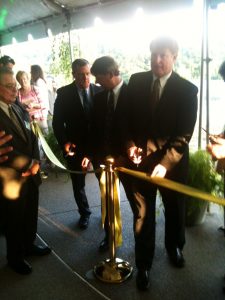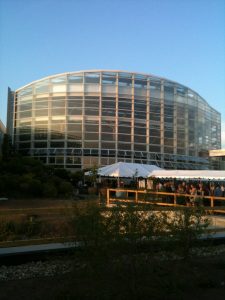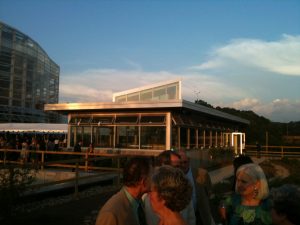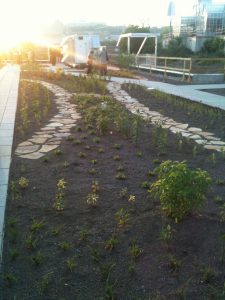Deepening the Green at Phipps Conservatory
A truly transformative moment in our region’s history was witnessed by over four hundred people this week. Amid speeches by politicians and funders, the ribbon cutting for the Phipps Conservatory and Botanical Gardens’ long-awaited Center for Sustainable Landscapes allowed people to see this impressive building first-hand.
 Executive Director Richard Piacentini’s vision of the project was formed in 2006 after having heard of the Living Building Challenge, a new conception of sustainable buildings. The LBC sets a standard for a building that will generate more energy than it produces, will handle all stormwater on site, will not send waste to landfills, uses only regional materials, and uses exclusively non-toxic materials. The region-based approach also appealed to Piacentini, who insisted that talent that was exclusively local could and would design and build this project. The achievement of these high sustainability goals must also be demonstrated out over a complete year of building operations.
Executive Director Richard Piacentini’s vision of the project was formed in 2006 after having heard of the Living Building Challenge, a new conception of sustainable buildings. The LBC sets a standard for a building that will generate more energy than it produces, will handle all stormwater on site, will not send waste to landfills, uses only regional materials, and uses exclusively non-toxic materials. The region-based approach also appealed to Piacentini, who insisted that talent that was exclusively local could and would design and build this project. The achievement of these high sustainability goals must also be demonstrated out over a complete year of building operations.
So in some ways, this ribbon cutting was not a completion point, but a starting point. evolveEA has been involved in this project since January 2007, creating a project statement and managing the selection of the design team. We have been involved since in management of the LEED and LBC certifications. We will be involved in monitoring the building operations and assuring the project’s lofty achievement goals.
The 24,000 square foot building will house offices and classrooms, opening to the public in July. It features a green roof covering the entire project roof at the same level as the Conservatory’s popular plaza due to the prominent south-facing hillside that defines the building site. The building ‘s two floors have ample daylight, allowing for minimal use of electrical lighting and automated and controllable windows that will allow a minimal need for heating and cooling.

The building site tells a story. Over 500 photovoltaic panels will provide the building’s energy needs. A constructed wetland and lagoon will provide lush exterior spaces, while also holding and treating stormwater and building waste water. Aside from helping to achieve the project’s performance goals, these elements will all work to educate visitors. We expect this project to become a national and global destination. As Dennis Maloskey of the US Green Building Council’s Board of Directors said at the event, “This building IS the future. We are witnessing it right now.”



